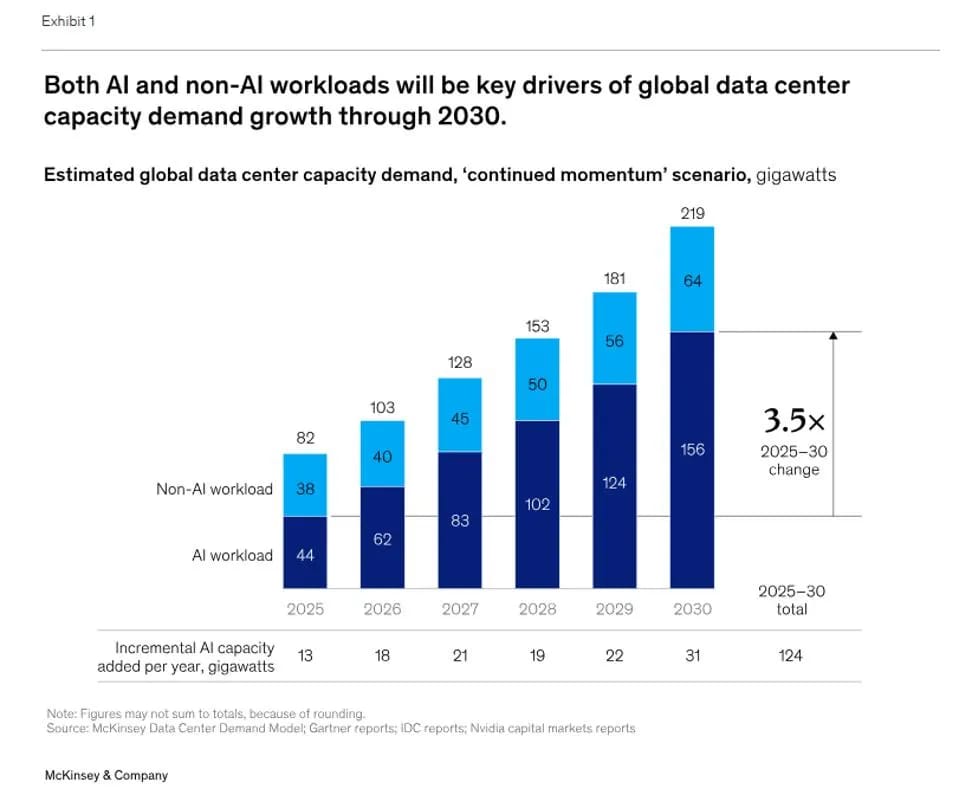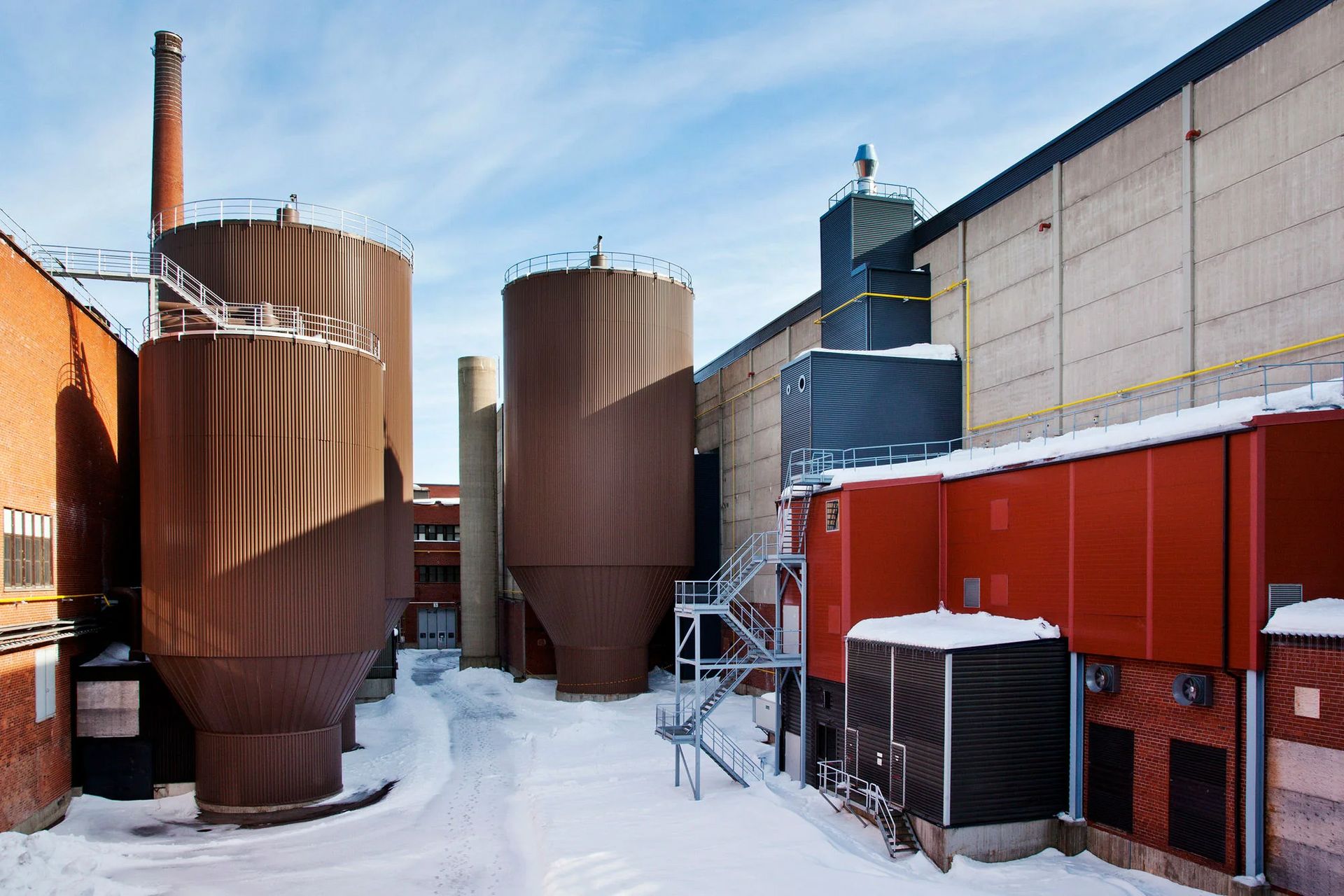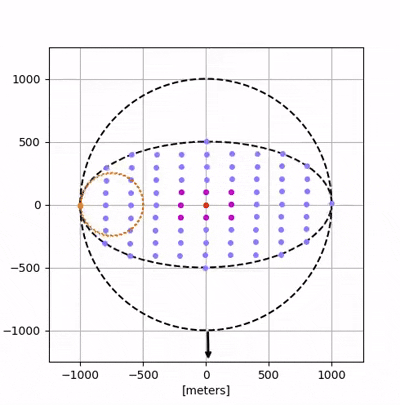- Flip The Tortoise
- Posts
- Data Centres In Space
Data Centres In Space
What could go wrong?
Big tech’s uninhibited desire to expand AI capabilities and encourage widespread adoption of AI tools at any cost is resulting in a lot of experimentation around where AI and cloud data centres should and could be built.
We discussed a few weeks back that Artificial Intelligence systems could account for nearly half of data centre power consumption by the end of this year.
There are already freshly built data centres sitting idle because companies and municipalities don’t have the electricity to power them.
Rising electricity demand from data centers is heightening the risk of blackouts across a wide swath of the US this upcoming winter.
And the ambitions of some companies suggest that previous assumptions about energy use and carbon impact were woefully understated.
For example, OpenAI’s colossal AI data center plans alone could consume as much electricity as the nation of India annually and emit twice as much carbon dioxide as ExxonMobil’s entire global operations.
And tech folk say this isn’t enough.

Regardless of where we put all those GPUs and TPUs, it would be a good idea to plan to locate AI infrastructure in places where energy is cheap and abundant, where real estate is equally inexpensive, or possibly just in places that we’re not using for anything else.
Data centres have been dropped into weird, unlikely places for decades.
We’ve put data centres in Antarctica.
We’ve put data centres in former Cold War bunkers and a former high-security NATO ammunition storage facility.
We’ve put data centres on offshore platforms in our seas and oceans.
We tried putting distributed data centres in people’s homes.
We tried putting data centres in abandoned malls and big box stores.
OpenAI has partnered with Samsung to explore the possibility of building floating data centres.
Microsoft experimented with putting data centres at the bottom of the ocean.

Microsoft Project Natick
Some Chinese researchers thought that was a fantastic idea and are expanding on Microsoft’s test. They launched the world’s first commercial underwater data center in Hainan.
Google dropped a data centre in an old Finnish paper mill.

Google turned a former paper mill in Hamina, Finland, into a data centre
In October, Jeff Bezos predicted that gigawatt-scale data centres could be built in space within the next 10 to 20 years and that continuously available solar energy would eventually make them outperform those on Earth.
Google heard this news and said, “hold my beer”.
Earlier this month, Google announced Project Suncatcher.
Project Suncatcher is a moonshot exploring the idea of equipping solar-powered satellite constellations with TPUs and free-space optical links to one day scale machine learning compute in space.
It is an ambitious project. And an expensive one.

Evolution of a free-fall (“no thrust”) constellation under Earth’s gravitational attraction, modelled to the level of detail required to obtain sun-synchronous orbits, in a non-rotating coordinate system, relative to a central reference satellite S0. The arrow points towards Earth’s center.
However, the expected cost of delivering AI from space might become much more reasonable as space launches from companies like SpaceX and Blue Origin become more frequent and cheaper.
Google plans to launch a learning mission in partnership with Planet, that will include two prototype satellites, by early 2027. This experiment will test how Google’s models and TPU hardware operate in space and validate the use of optical inter-satellite links for distributed tasks.
“Eventually, gigawatt-scale constellations may benefit from a more radical satellite design; this may combine new compute architectures more naturally suited to the space environment with a mechanical design in which solar power collection, compute, and thermal management are tightly integrated. Just as the development of complex system-on-chip technology was motivated by and enabled by modern smartphones, scale and integration will advance what’s possible in space.”
It sounds suspiciously familiar.
I just hope that as we march closer to scenes from our most dystopian sci-fi movies, when AI becomes self-aware, it still likes us enough not to kill us all.
“Artificial intelligence is the future, not only for Russia, but for all humankind. It comes with colossal opportunities, but also threats that are difficult to predict. Whoever becomes the leader in this sphere will become the ruler of the world..”
– Vladimir Putin
The Simplest Way to Create and Launch AI Agents and Apps
You know that AI can help you automate your work, but you just don't know how to get started.
With Lindy, you can build AI agents and apps in minutes simply by describing what you want in plain English.
→ "Create a booking platform for my business."
→ "Automate my sales outreach."
→ "Create a weekly summary about each employee's performance and send it as an email."
From inbound lead qualification to AI-powered customer support and full-blown apps, Lindy has hundreds of agents that are ready to work for you 24/7/365.
Stop doing repetitive tasks manually. Let Lindy automate workflows, save time, and grow your business

